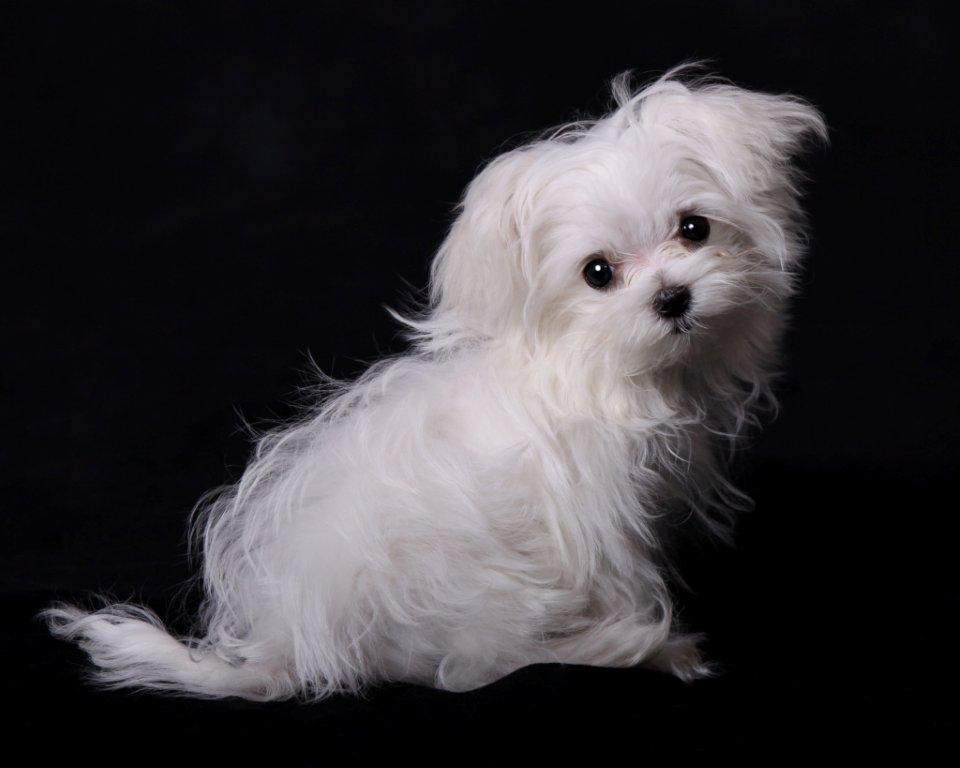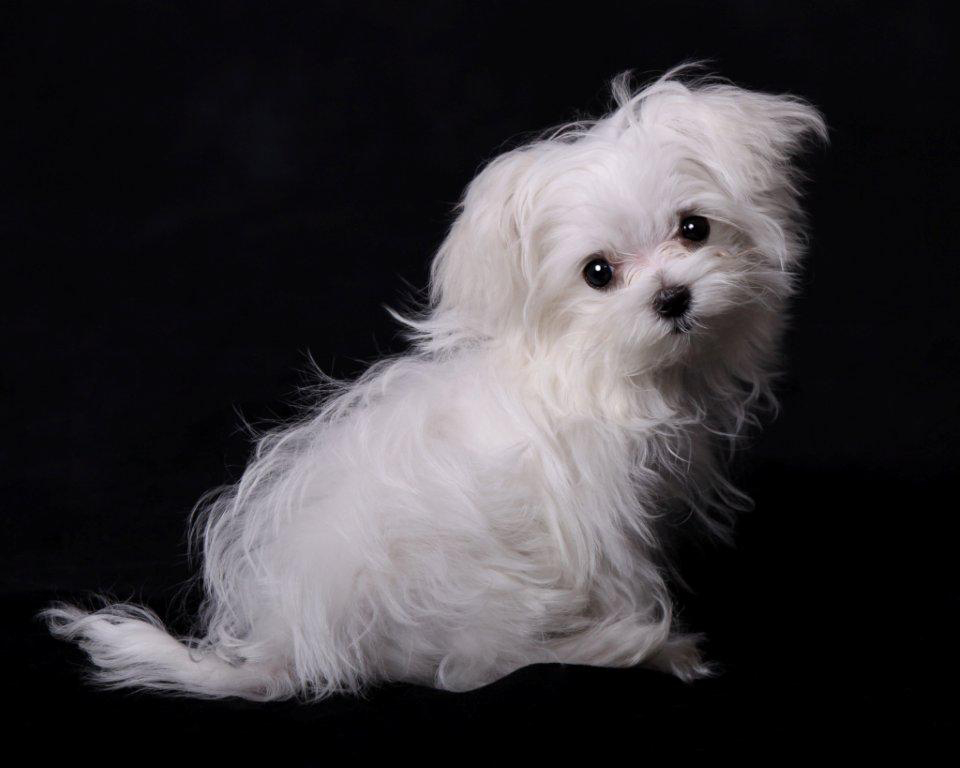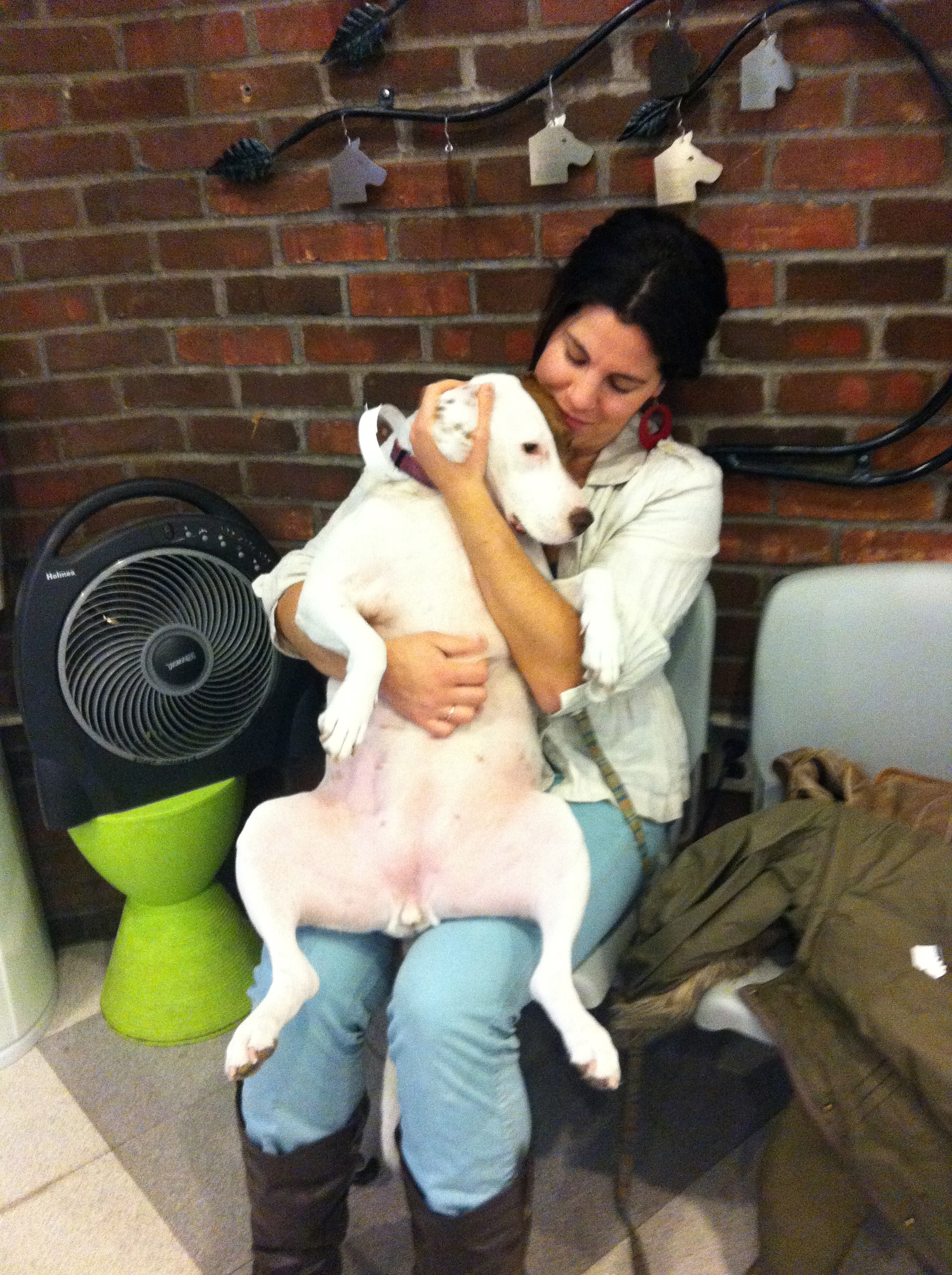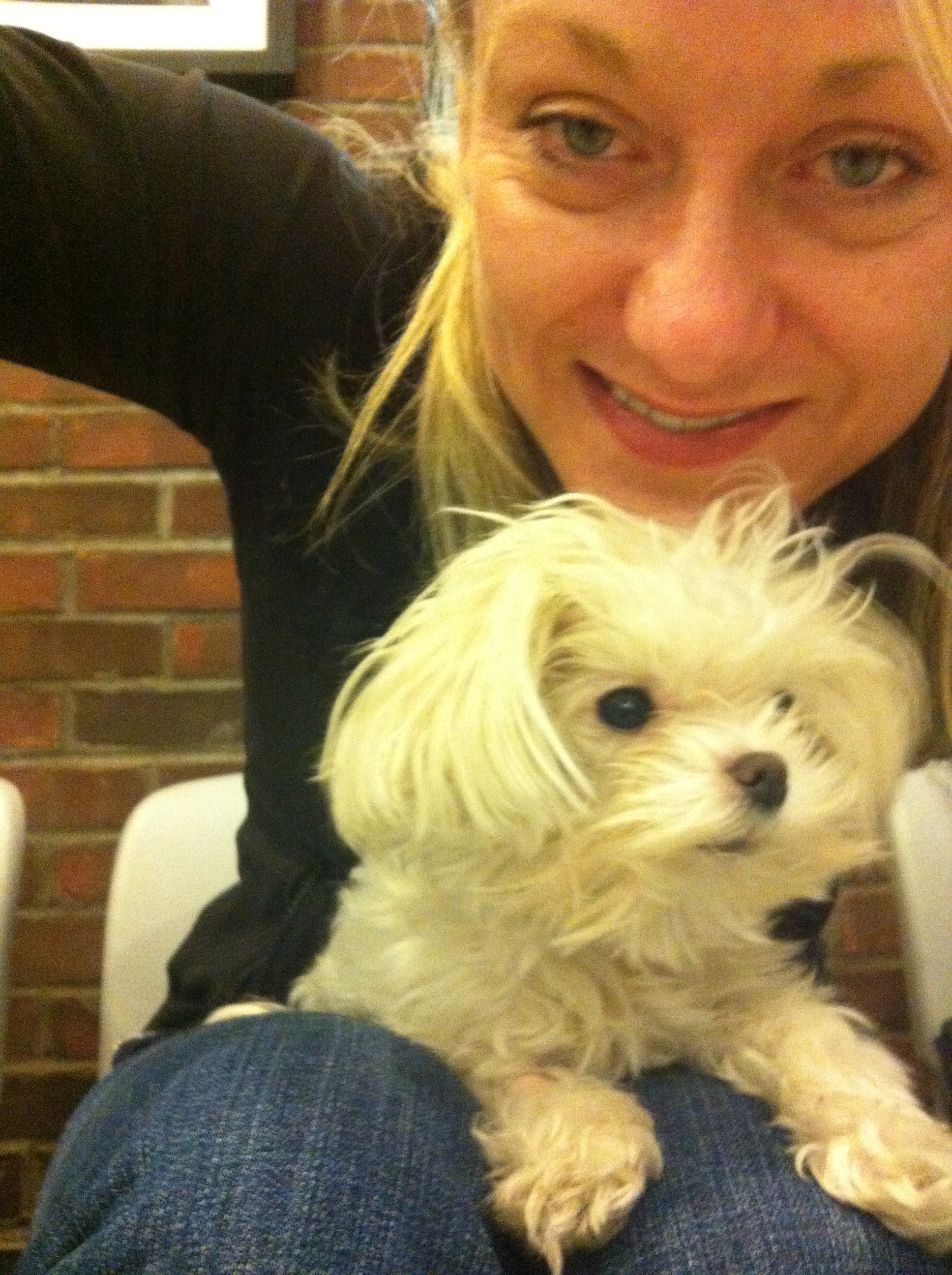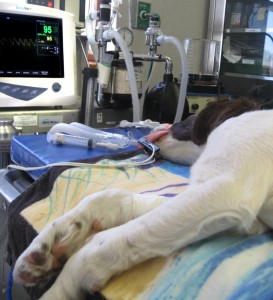7:45 am
I begin this blog in an anxious state, an unsettling mixture of sorrow, fear and hope. I sit waiting in the tile-floored, plastic-chaired waiting room of the University of Pennsylvania Matthew J. Ryan Veterinary Hospital while my little Maltese, Moose, is in surgery.
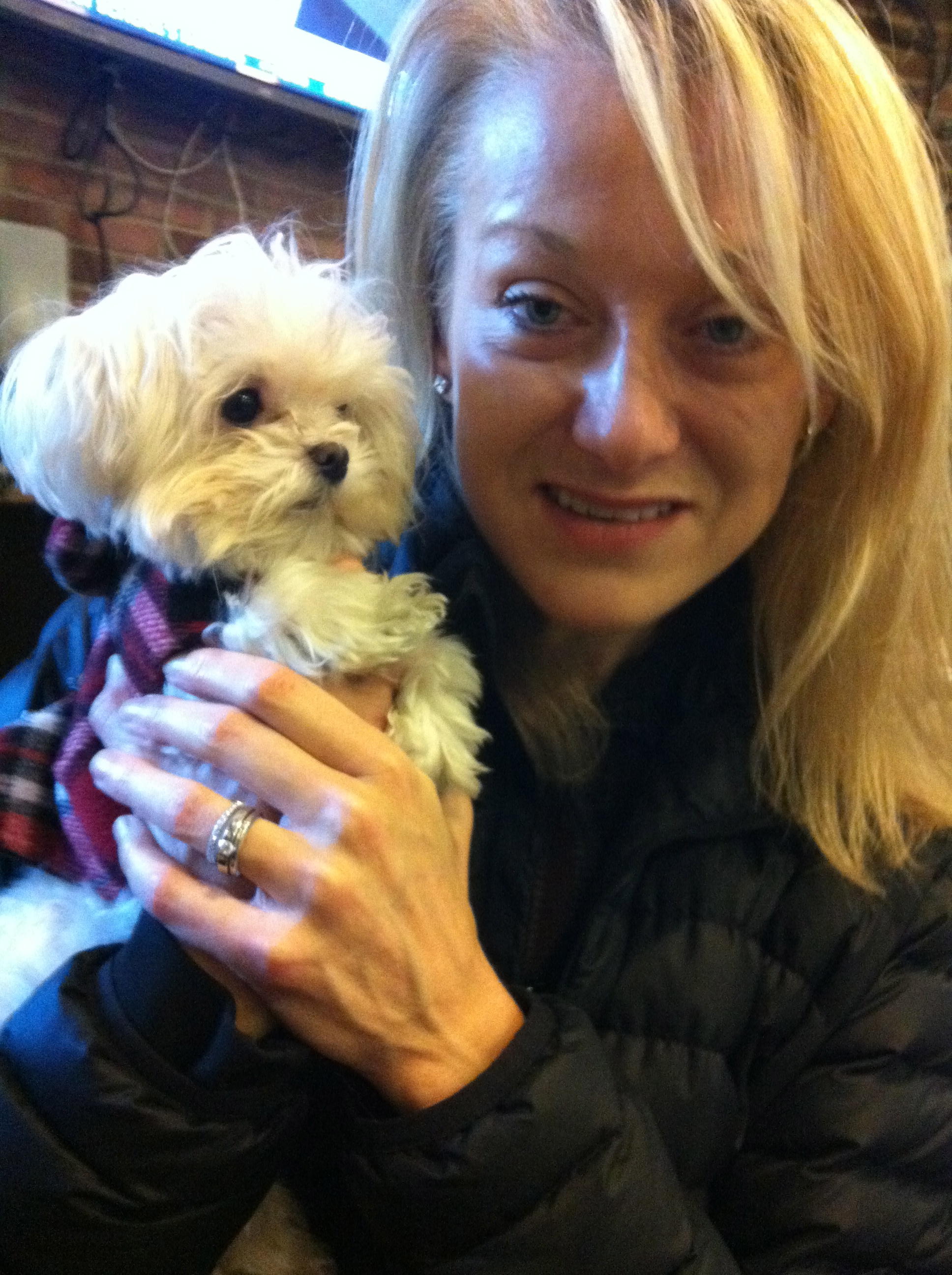
My husband snaps a photo of Moose and me before Moose goes into surgery at the University of Pennsylvania Veterinary Hospital
Our journey here has been long in miles, time and spirit. But I’ve come here, because I want the best care possible for my little Moose. And, because getting good veterinary care is so difficult, my husband and I traveled three hours to Philadelphia from our home in Washington, DC to ensure we gave Moose the best care we could find.
I write from a place of sorrow, because my journey to this place began nearly two years ago with the death of our last Maltese, Falcon, who died a pointless and avoidable death due to veterinary misdiagnosis, poor judgment and frankly neglect. We put our puppies, our loved ones in the hands of these doctors, and far too often assume that the vet knows best, that the rise in veterinary medical costs of the past several years has meant a corresponding increase in the quality of care. That the credit card balances we are willing to carry for the cost of vet treatment somehow guarantee that we are doing our best to secure their care. And in most cases, things go just fine, we retrieve our treated pets, tails wagging, puppy kisses abound. We get the report, pay the bill and assume that all is well. We did our part. They’re the experts, not us.
But then something happens and you’re forced to realize that this view of veterinary care, where the vet knows best and the high prices and fancy diagnostic equipment with the corresponding high bills means you’re getting high quality care, this view is a mirage – get close enough, and you see the vision disappear before your eyes. In our case, our six-month-old Maltese named Falcon died a senseless, avoidable death from internal bleeding. Our vets spent five days racking up thousands of dollars testing our puppy for cancer antibodies, autoimmune diseases and liver shunts, spending precious time and money we did not have but were willing to borrow. While our vet looked for rare and unlikely causes of Falcon’s sudden onset nausea, a piece of plastic lay lodged in his esophagus next to his heart. All he needed was an x-ray – a fast, painless, inexpensive x-ray would have told any vet student that my puppy had swallowed something. But that test came $3,500 and four days later. It took another day to read the x-ray. By then, Falcon’s esophagus had given out. After reading the x-ray and calling me to tell me they had discovered
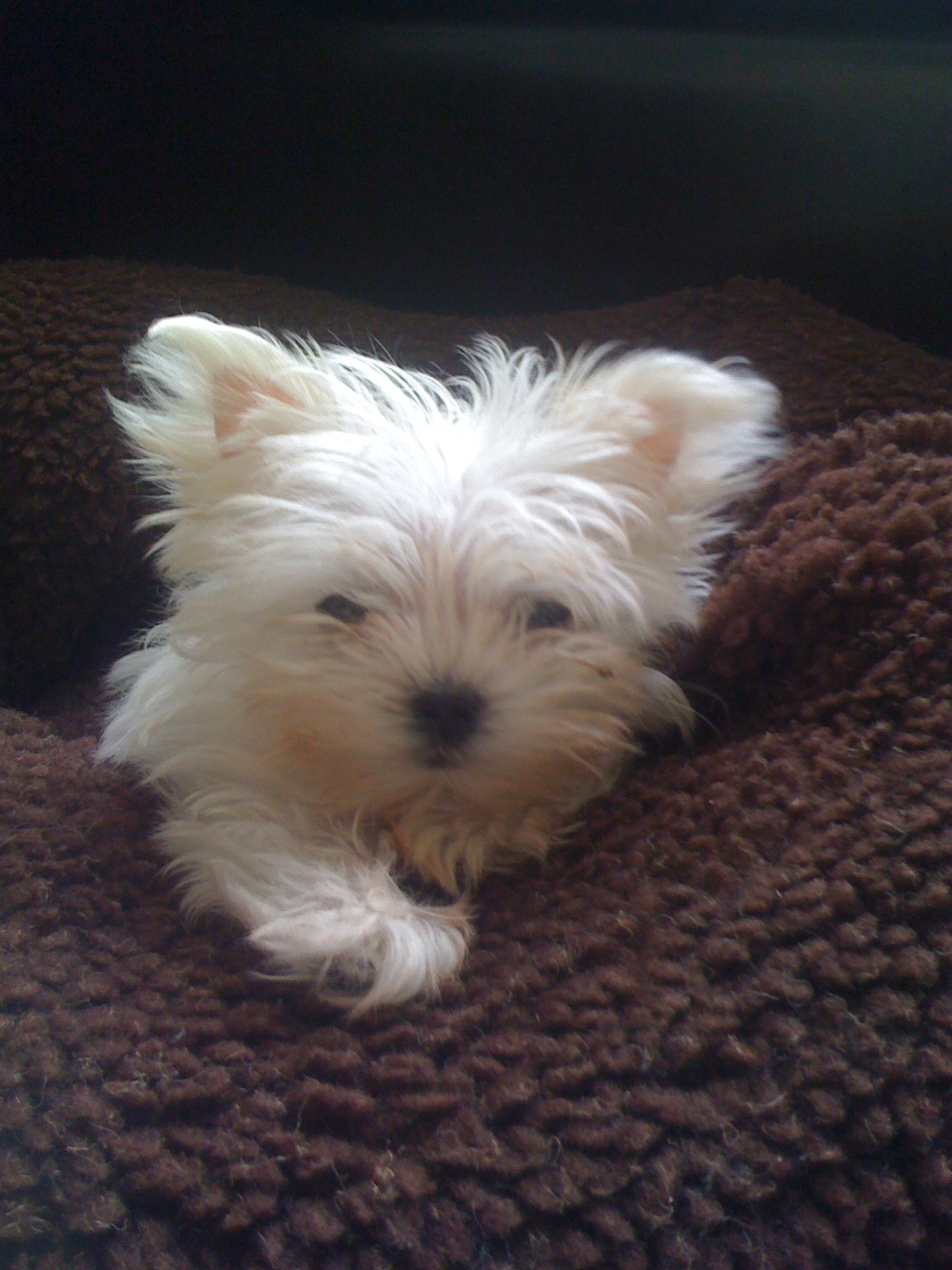
the source of his sudden illness, the vet noticed blood in his kennel. His esophagus had ruptured, and he began losing blood at an alarming rate. As they laid him on the table where they were to begin the procedure to extract the foreign object, his heart stopped, pierced by the foreign object that had lodged in his tiny trachea days before. My little Maltese Falcon was gone. After an hour of trying to revive him, I gave them permission to stop trying to restart his heart. It was over. My head and heart exploded in sorrow and anger and confusion about how this could have happened. By trusting the vets to use their judgment in finding the cause of his illness, I had failed to keep my puppy safe. I vowed to never, ever let this happen again.
Once you lose a puppy to this kind of veterinary neglect, the profession takes on a different cast. You start peeling back the layers, and you uncover all manner of stories that are even worse than Falcon’s. Cases where straightforward procedures like nail trimmings result in death. Anesthesia overdoses attributed to mysterious allergic reactions, until the pathology report comes back and you discover a Yorkie was given the amount of anesthesia used for a 70 pound Labrador. These are not pleasant stories to hear. They are tales of real emotional loss and pain. They are tales of cats dying way too young and dogs who depart with far too many balls left to retrieve. You return to your apartment and stare at the empty bowls and the toys scattered around the floor from pre-hospital play and the emptiness and pain hit you in a way that is both unexpected and completely appropriate. You have lost your baby, not from cancer or old age or an accident at play. You have lost them while they were in the hands of somebody you were paying very well to protect them. How did it all go wrong? How did you end up in this awful place?
9:44 am
Dr. Robert Menzies, Moose’s dental surgeon, calls with an update. Moose has two molars, which became infected as they were coming in to replace his baby teeth. The infection has spread to the bone. They need to remove the molars and a couple of other teeth that look prone to cause a similar situation on the other side of his jaw. The surgery should take two hours.
The good news is that he has responded well to the sedatives and the anesthesia. So far, all is going fine. Two hours and multiple teeth extractions is a long time and a lot of work for a little man like Moose. It’s dangerous. But with an infected bone, the teeth need to come out. I give my consent to proceed.
Two hours is a long time to wait when you’re awaiting news about your little loved one. I know that I have done my best to ensure he is receiving the best care possible. The conscientiousness of the vets that I met, coupled with a thorough review of their surgery protocols the previous day, give me comfort. But the anxiety persists. The clock doesn’t seem to move.
Sitting in the waiting room of the University of Pennsylvania Matthew J. Ryan Veterinary Hospital is a helpful distraction. For the past three hours, I’ve watched a parade of dogs, cats, ferrets and birds come through, each with an anxious owner, clearly concerned about their pet. The waiting room chairs are arranged in a square. And as we face each other, our
anxious eyes meet and we instantly begin to share our stories, ask about the malady that brings that person’s beloved animal to this place of treatment and healing. We form an anonymous support group, sharing tales of deep emotion and fear, offering good wishes, sharing advice. We learn the names of the pet, age, how they were acquired. We learn about their pet siblings and hear stories about their favorite games and interactions with their family and community. But we, the humans in the room, never share our names. Nobody ever asks. It’s not about us. It’s about our beasty loved ones. It’s our connection with their pets who are serving as surrogates for our sick pet that turns this stranger into a friend. The exchange of our human names is beside the point.
12:14 pm
No updates. It’s been 2.5 hours. I desperately want to assume that it is all proceeding well, but the knot in my stomach is growing. I can feel the adrenaline pulsing and the parade of beautiful puppies and wagging tails is no longer able to distract me from that which brought me to this place. Is my Moose OK? Are there complications? Has he died and they’re trying go get up the nerve to tell me? Did they break his tiny, delicate jaw when they removed the diseased teeth, which were anchored to the now diseased bone? I ache to hold him, to feel his warm breath and slimy tongue on my face and look into his loving, quizzical, intelligent eyes. How do you live through the death and severe illness of children? I can’t imagine it could be worse than this.
I decide to email Dr. Paula Larenza, head of anesthesiology at University of Pennsylvania Veterinary Hospital. She spent more than an hour with me the previous day, talking me through their protocols and checklists and answering my many questions aimed at ensuring they provided high quality care. Another doctor is attending Moose’s surgery, so she may have time to give me an update.
12:28 pm
Email from Dr. Larenza, the head of anesthesiology. Moose is still in surgery. He is stable under the anesthesia. They have removed the diseased teeth from his left upper jaw, and they are moving to the other side to extract those teeth as well. Based on the radiographs and examination, a could of teeth on the other side of his mouth are headed for a similar fate. Apparently his mouth is too small for his adult teeth. The genes that made him a tiny 2.5 pound Maltese apparently forgot to send the message to the genes that dictate the size of adult teeth. There’s not enough room, and the overcrowded jawbone has become a breeding ground for infection.
I call my husband, then call my mother and text my sister. I have asked many people to pray, chant, meditate and otherwise find some way of generating positive vibes toward little Moose. It may be superstition to some people, but I don’t care. I’ve done all I can do to make sure he’s getting the best possible care. The rest is up to the physicians and to the mysterious biology of our little dog, which somehow dictates how much stress he can endure.
1:18 pm
Dr. Menzies calls to report that they have just now finished the procedure on the infected teeth. He sees several teeth on the other side of the jaw that make Moose a sitting duck for periodontal disease. Removing them would be good for Moose’s long-term health. But, it means keeping him under anesthesia for another hour. He’s twitching on the table, which means he’s experiencing pain. He wants to infuse lidocaine through his IV to help keep the pain under control and therefore decrease the need for general anesthesia. Prior to the surgery, a gracious vet had walked me through best practices for this type of procedure. She had said that pain killers would be important, because they helped decrease the need for general anesthesia. This was good. I had context for my decision. I ask the doctor if ican consult with the anesthesiologist about the relative risks of prolonging this procedure, versus the need to do another procedure in the next few months. Doctor Menzies goes to consult with the anesthesiologist and says he will call me back. The clock is ticking, but I have time to think. Lidecaine is an old drug. Old means tested, which is good. Few surprises. No drug, however, is without risk. While waiting for the anesthesiologist to report back, I google “lidecaine canine iv infusion” on my iPad and get a quick read on the top-line research. It seems very safe. The evidence is building to support this decision. The anesthesiologist reports back that Moose’s vitals remain strong and that the relative risk at this point of an additional 45 minutes is small. I take a deep breath, give my consent to proceed. And I pray that this decision, this choice is not a mistake. And I try to distract myself. Fortunately, an adorable big mutt named Brewster has just walked in. His owner and I begin to chat, and he tells me that he adopted Brewster several years ago after he was rescued from an abusive ‘home’. Brewster had been beaten so badly that his back was broken. Yet, Brewster was a happy, loving, warm little soul. I stared into his eyes and patted his back and was boosted by the amazing ability of this sweet creature to move out of his abuse and still be able to trust.
There’s something magical about dogs. They have the ability to communicate with us at levels that other humans cannot. They have ways of knowing us and us them that does not work with human-to-human connection. Once you experience this, you are immediately transformed into a different way of being. One day, you balk at the notion of getting dog hair all over you or seeing drool all over your wood floors. Then you make that connection, and you get it. You no longer judge the crazy dog lady down the street. You actually become your own version of the crazy dog lady, speaking in baby tones, saying silly things you would never utter in the presence of another human, at least a human who hasn’t also made that connection.
Once you’ve reached this plane of being with your dog, you look at other dogs differently, and you interact in new ways with the people who own them. The stranger on the other end of the leash is no longer a stranger. He’s Brewster’s dad. You may know nothing about what Brewster’s dad does in his non-dog walking moments of life, but you know everything about Brewster. His health, his habits, how smart he is, how obedient. Where he likes to sleep, what he thinks of the standard poodle down the street. The details of the life of Brewster’s father aren’t necessary. Through the power of the puppy, you have both been transformed into ‘dog people’ and for ‘dog people,’ the connection that we feel with our beloved animal friends is enough for us to form a fast bond with our ‘dog people’ brethren. The details of other aspects of life, whether they be exciting or mundane, just aren’t a necessary part of this equation.
Dog people form an instant, traveling, amorphous community. We look at one another in the presence of our puppies and we recognize the look of the smitten in the eyes of the human holding the leash attached to the puppy. While non-dog people watch on in disbelief, we can chat for hours with complete strangers about potty training, the consistency of poo and the best shampoo for bathing your dog between grooming appointments. While odd to the non-dog people, these are the important details of the lives of dog people. They are our mysterious little life companions, the furry little soul mates that give us love and make us laugh and play an indescribable and intangible part in completing the human experience, without which it seems impossible to be truly content.
2:38 pm
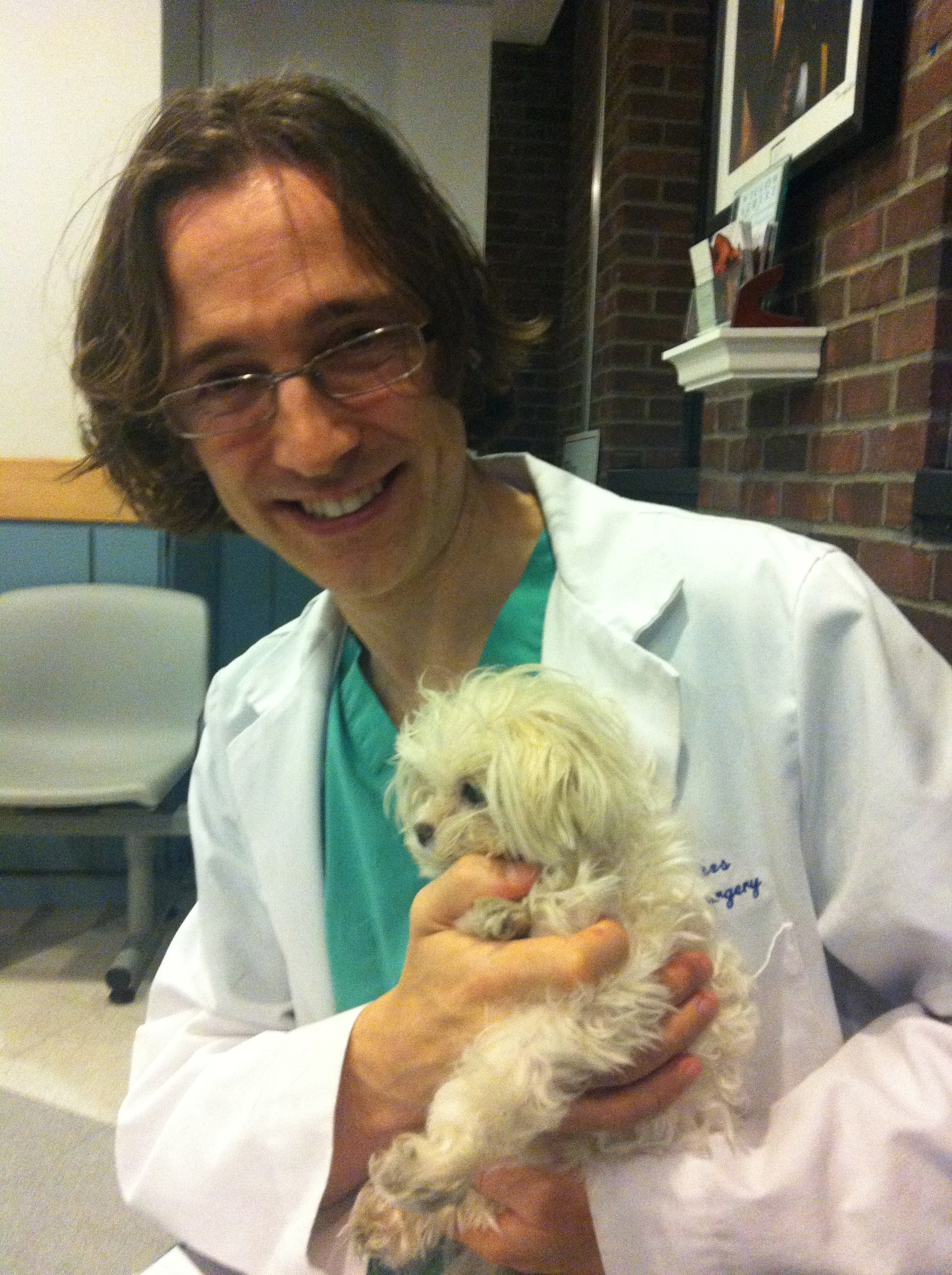
Dr. Robert Menzies, Moose's dental surgeon, holds Moose in the waiting room following his surgery at the University of Pennsylvania Matthew J. Ryan Veterinary Hospital. This photo was taken at approximately 7 pm at night, 12 hours after Dr. Menzie took Moose to begin preparing for the surgery. Moose was Dr. Menzie's only patient that day. I am incredibly thankful for the devotion, care and professionalism that Dr. Menzie displayed in caring for my little Moose.
Armed with this knowledge, I grill Dr. Menzies on Moose’s status. How are they monitoring him? What equipment are they using? Do they have an audible heart rate monitor? How are they tracking his vitals? Doctor Menzie assures me with each question and says he will call me when Moose is stable enough for me to come be with him. I breathe a breath of anxious hope. It isn’t over yet, but a really big hurdle has been cleared. My Moose has made it through his five hour surgery with strong vitals and is awake.
I call my husband, then my mother, then text my sister again. Everybody is relieved, but I caution them that we aren’t out of the woods yet, something could still go wrong, I need to be vigilant. It’s not yet time to relax.
4:03 pm
Dr. Menzie calls again. He says Moose is continuing to recover very well. While he still needs to recover, they’re willing to let me hold him while he comes out of the anesthesia. They have other patients in the recovery room, but they’re going to bring him to sit with me in the waiting room. A few minutes later, he walks through the door with my puppy who looks tired and confused but otherwise OK. Moose licks my nose and relaxes into my arms. The process isn’t over yet, but I have my baby. I will monitor him myself, with a team of doctors seconds away if I sense anything isn’t right. I lay him on my lap, stroke his belly and stare into his eyes. This is my puppy.
*Post Script – This post was written in its entirety while in the waiting room of the Matthew J. Ryan Veterinary Hospital on January 31,2012. Apart from correcting spelling errors and typos, I left the text of the prose as it was written that day in an effort to share my thoughts, experiences, reflections and emotions while I waited, anxiously, for Moose’s surgery to be complete. One month later, Moose is fully recovered and back to attacking his much larger, big brother Buckley, giving my husband and me incessant puppy kisses and getting belly rubs at multiple points during the day. For this, I am incredibly thankful. I am grateful to the skilled and professional veterinarians at the University of Pennsylvania Veterinary School and the Matthew J. Ryan Veterinary Hospital who provided Moose with top-quality care. Their commitment, professionalism and compassion help give me hope that I and my fellow pet lovers can find good quality health care for our furry loved ones.

